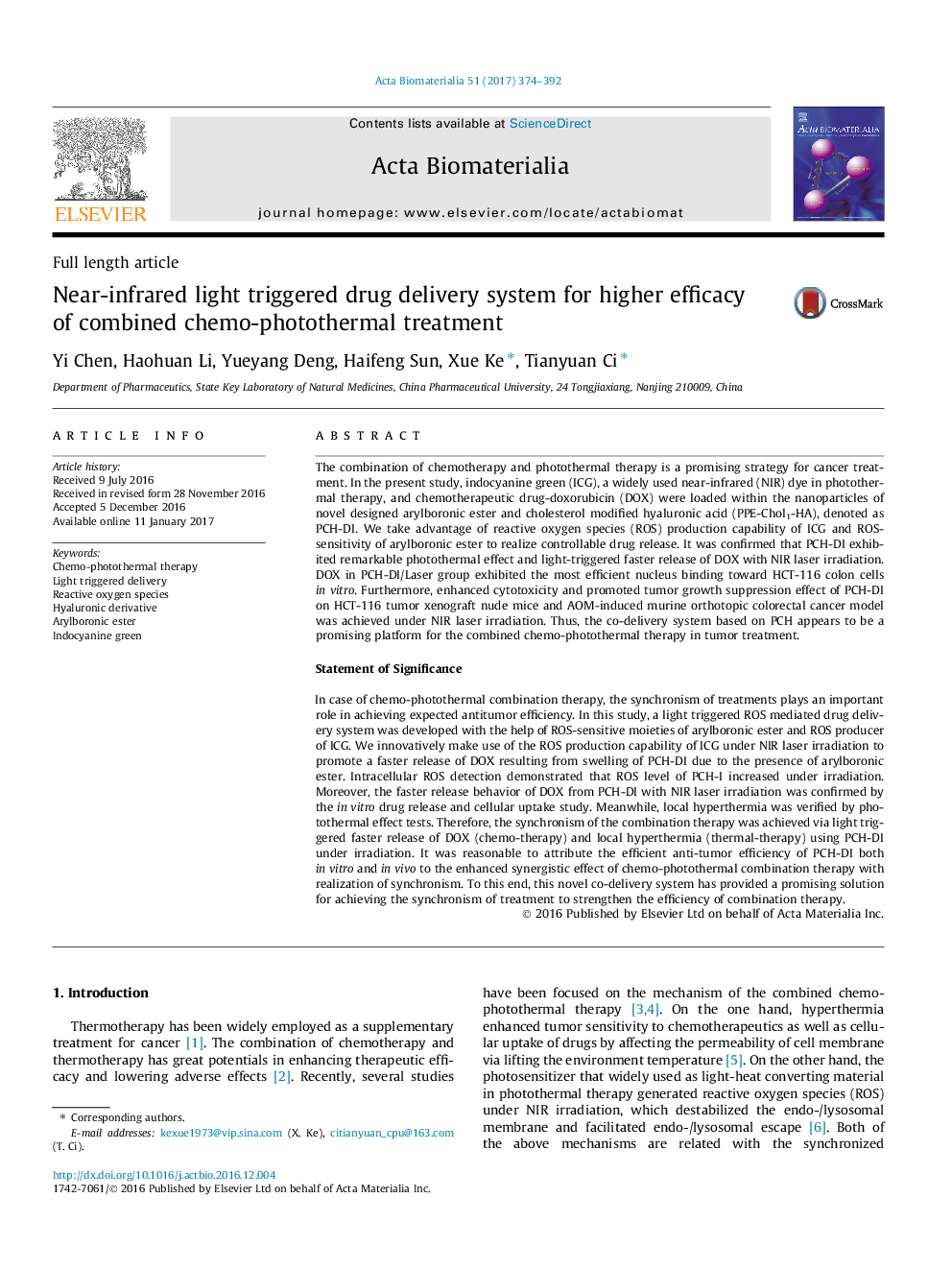| Article ID | Journal | Published Year | Pages | File Type |
|---|---|---|---|---|
| 6449505 | Acta Biomaterialia | 2017 | 19 Pages |
The combination of chemotherapy and photothermal therapy is a promising strategy for cancer treatment. In the present study, indocyanine green (ICG), a widely used near-infrared (NIR) dye in photothermal therapy, and chemotherapeutic drug-doxorubicin (DOX) were loaded within the nanoparticles of novel designed arylboronic ester and cholesterol modified hyaluronic acid (PPE-Chol1-HA), denoted as PCH-DI. We take advantage of reactive oxygen species (ROS) production capability of ICG and ROS-sensitivity of arylboronic ester to realize controllable drug release. It was confirmed that PCH-DI exhibited remarkable photothermal effect and light-triggered faster release of DOX with NIR laser irradiation. DOX in PCH-DI/Laser group exhibited the most efficient nucleus binding toward HCT-116 colon cells in vitro. Furthermore, enhanced cytotoxicity and promoted tumor growth suppression effect of PCH-DI on HCT-116 tumor xenograft nude mice and AOM-induced murine orthotopic colorectal cancer model was achieved under NIR laser irradiation. Thus, the co-delivery system based on PCH appears to be a promising platform for the combined chemo-photothermal therapy in tumor treatment.Statement of SignificanceIn case of chemo-photothermal combination therapy, the synchronism of treatments plays an important role in achieving expected antitumor efficiency. In this study, a light triggered ROS mediated drug delivery system was developed with the help of ROS-sensitive moieties of arylboronic ester and ROS producer of ICG. We innovatively make use of the ROS production capability of ICG under NIR laser irradiation to promote a faster release of DOX resulting from swelling of PCH-DI due to the presence of arylboronic ester. Intracellular ROS detection demonstrated that ROS level of PCH-I increased under irradiation. Moreover, the faster release behavior of DOX from PCH-DI with NIR laser irradiation was confirmed by the in vitro drug release and cellular uptake study. Meanwhile, local hyperthermia was verified by photothermal effect tests. Therefore, the synchronism of the combination therapy was achieved via light triggered faster release of DOX (chemo-therapy) and local hyperthermia (thermal-therapy) using PCH-DI under irradiation. It was reasonable to attribute the efficient anti-tumor efficiency of PCH-DI both in vitro and in vivo to the enhanced synergistic effect of chemo-photothermal combination therapy with realization of synchronism. To this end, this novel co-delivery system has provided a promising solution for achieving the synchronism of treatment to strengthen the efficiency of combination therapy.
Graphical abstractThe near-infrared light triggered drug delivery system for combined treatment to achieve the synchronism of chemotherapy and thermotherapy.Download high-res image (199KB)Download full-size image
